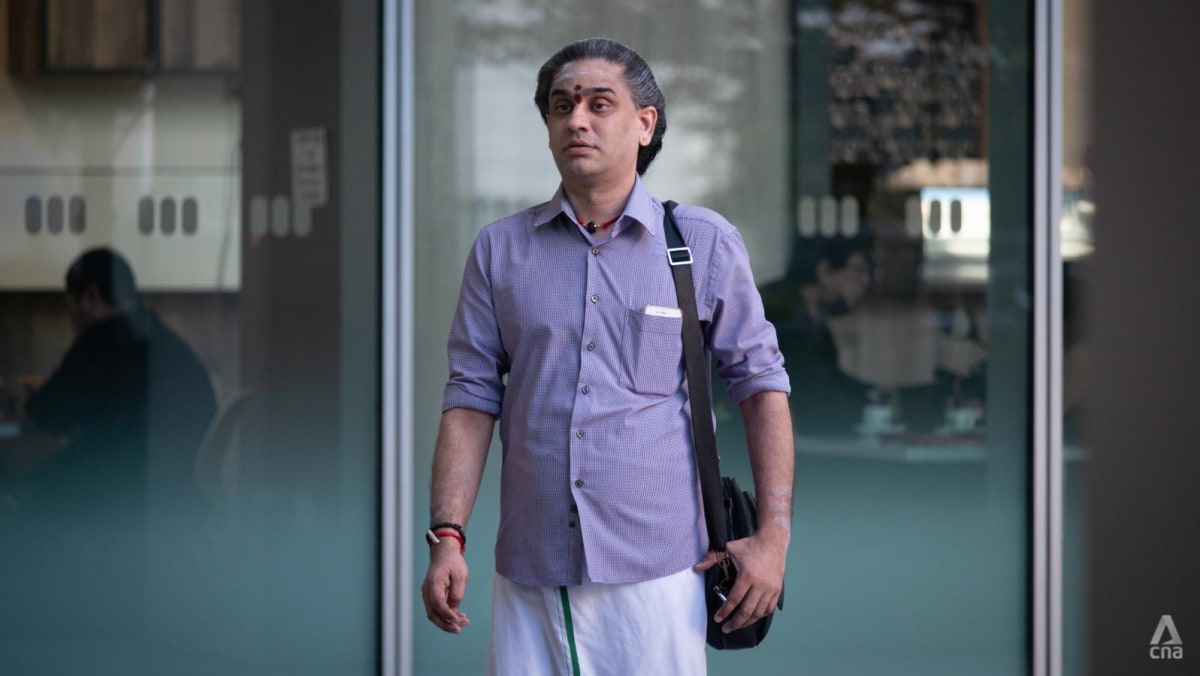
SINGAPORE: Over almost five years, the chief priest of Singapore’s oldest Hindu temple misused ceremonial jewellery by pawning them repeatedly – to the tune of over S$2 million (US$1.5 million).
Kandasamy Senapathi, 39, was caught only when the COVID-19 pandemic struck in 2020, throwing the regular audit timing off and revealing the missing jewellery.
Kandasamy was sentenced to six years’ jail on Tuesday (May 30) for his crimes.
He pleaded guilty to two charges of criminal breach of trust by dishonest appropriation and two charges of transferring criminal proceeds out of the country. Another six charges were considered in sentencing.
The court heard that Kandasamy, an Indian national, was employed by the Hindu Endowments Board.
He was promoted to chief priest of Sri Mariamman Temple when his predecessor retired.
As part of his role, he was entrusted with access to more than 250 pieces of gold jewellery with a value of S$1.1 million. The jewellery was used to adorn Hindu deities during special events and ceremonies.
Kandasamy was the only person with the keys and access to the safe containing the jewellery.
He began pawning pieces of the jewellery in 2016, taking them to pawn shops and later redeeming them by using money he obtained from pawning other pieces of temple jewellery.
In 2016 alone, Kandasamy pawned 66 pieces of gold jewellery from the temple on 172 occasions. He redeemed all the jewellery and returned it back to the temple without anyone knowing.
He continued this practice between 2016 and 2020, rolling the cash and returning the jewellery whenever he knew an audit was scheduled.
The total pawn value he obtained from the jewellery was more than S$2 million. He deposited some of the money into his personal bank account and remitted about S$141,000 to India.
CRIMES UNCOVERED
In March 2020, at the height of the COVID-19 pandemic in Singapore, the temple had to delay an external audit because of the “circuit breaker” measures forbidding non-essential activity in the country.
However, a member of the temple’s finance team arranged for an audit to be conducted during Phase 2 of the circuit breaker between July 2020 and August 2020.
In June 2020, this staff member was arranging for the audit when Kandasamy told him that he did not have the key to the safe. He said he had likely left the key in India while he was visiting family.
However, the staff member insisted that the audit had to be done, and Kandasamy eventually confessed to him that he had taken the jewellery for pawning.
At the time, 17 pieces of jewellery were with two pawn shops. Kandasamy borrowed money from friends and went with the temple employee to redeem the jewellery.
In the end, all the jewellery was returned to the temple and the temple suffered no loss, said the prosecutor.
The member of the temple’s finance team later filed a police report.
Kandasamy then resigned from his post as he felt guilty for pawning the temple’s jewellery, added the prosecutor.
She asked for seven years’ jail, pointing to the high pawn value of the jewellery involved.
Defence lawyer Mohan Das Naidu asked for about three years’ jail instead. He said there was no loss to the temple and his client had kept his word, with the jewellery eventually redeemed even before the temple made a police report.
Mr Naidu said it all started when Kandasamy wanted to help a friend raise funds for cancer, and also to help schools and temples in India.
However, it “got out of hand”. The lawyer said what Kandasamy did was wrong, but stressed that there was no loss to the temple as the jewellery was returned.
He said Kandasamy’s intention was “never to deprive the temple” of its jewellery, but he was “caught up in this vicious cycle of pawning and redeeming, pawning and redeeming”.
“It’s a very stupid venture,” added the lawyer.
Deputy Public Prosecutor Janice See said the offending conduct took place over about five years, and was only revealed by the unprecedented events of the COVID-19 pandemic.
She added that, in this case, the real mischief is not in the fact that he did not lose the jewellery – but that he used temple jewellery that did not belong to him and was in fact for sacred use, in order to generate a side income.
In sentencing, the judge said he could not ignore the fact that the case involved about S$2 million, which is a significant amount and higher than any previous similar cases.
